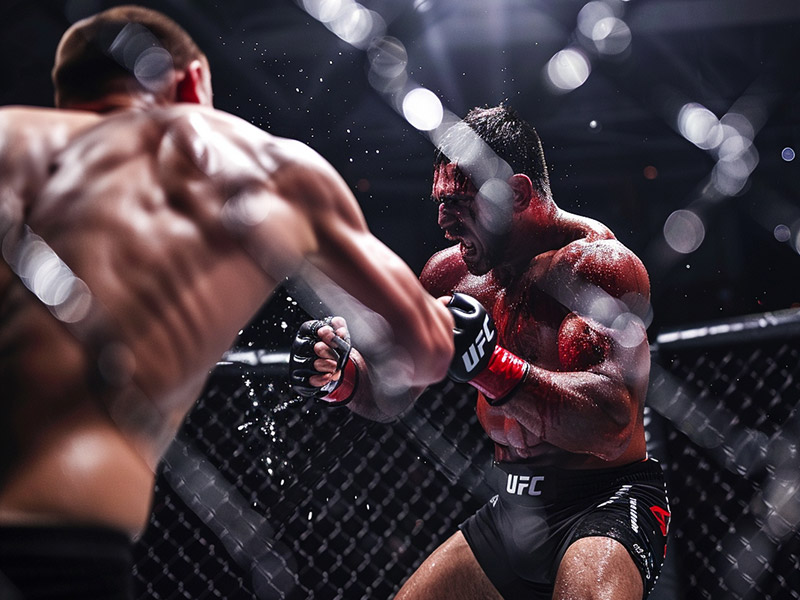Nature of the Encounter:
There are many self defense situations, like the recent slap attack at the Oscars, where a simple distance management technique or a clinch to control could suffice to nullify any possibility of injury.
But there are also situations, particularly in multiple opponent/attempted murder scenarios, where your only chance to survive is to be very violent, very quickly.
Nature of the Art:
Some arts regardless of the situation, you really have no choice but to engage in aggressive violent ways. Striking arts are designed to stop assailants through the effectiveness of…well… strikes. So you really have little choice in the matter. This is what you have trained to do, to hurt people badly and make them stop.
This is generally true of all full contact striking arts. But some exceptions might be the Thai Clinch. This is a grappling technique included in the curriculum of Thai training that can be used to hold or launch devastating attacks.
Here is an example from years ago of the lately infamous Joe Rogan using the Thai clinch to control an assailant (a crazed, unstable contestant who appeared on Mr’ Rogan’s show, Fear Factor). The attacker was held in check with Thai clinch until other individuals intervened. No one was injured in the melee.
The Choice Grappling Offers
This brings us to grappling. Grappling arts that prioritize control do not have to necessarily be brutal but can be EXTREMELY effective.
Brazilian Jiu-jitsu is probably the foremost expression of the concept of “position before submission” meaning that control is a paramount part of the art. When you are basing your art on control, unlike in striking, you have the choice to hurt or not hurt.
Here is a great example of grappling champion and current UFC fighter, Ryan Hall, subduing a violent drunk who threatened him. He uses a simple takedown, pass and mount pin. Notice he is COMPLETELY in control and opting to not hurt the individual at all:
UFC Fighter Ryan Hall vs Drunk Guy | Why You Shouldn’t Challenge a MMA Fighter
Matt Serra, former UFC champion and BJJ black belt doing the exact same thing. The restraint is very humane yet very effective:
Ex UFC champion Matt Serra hilariously restrains drunken man in restaurant
Getting to some more violent attacks. Here is an example of a enraged street criminal in Brazil being choked unconscious with a triangle choke by a BJJ trained officer. Note: a choke released in time does little to no damage on otherwise healthy individuals.
Police Officer Uses BJJ to Subdue Criminal in Brazil
Here is a much more violent encounter, where a machete wielding assailant is subdued by a wrestling double leg takedown to mount position.
Machete Wielding Maniac Subdued
And if you think size matters here is a very small BJJ practitioner subduing a criminal with a back triangle control. She opts not to hurt the assailant.
Robber Attacks Tiny 90 Pound Female Jiu Jitsu Fighter, It Ends Badly For Him
But she absolutely had the option to as UFC fighter Polyana Viana did to her would be rapist in Brazil in the same position:
UFC Fighter Polyana Viana Beats Up Perp Who Tried Mugging Her
So we can absolutely see effectiveness without necessarily being brutal or overly aggressive. But in multiple opponent scenarios it is difficult not to be effective without causing quick, efficient fight stopping damage. As we see here where two brothers are being assaulted by two college football players:
MMA Trained Kids Defend Against Assault From Football Players
So do you have to be brutal to be effective…? Well that depends both on the art you trained in AND the situation you are caught in.
